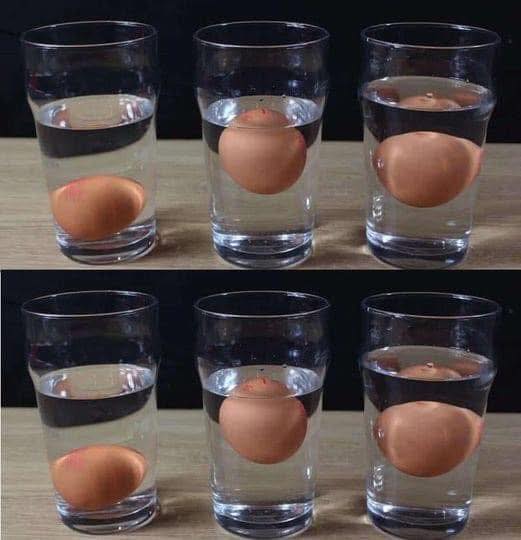ADVERTISEMENT
Before cracking the egg, examine the shell for:
ADVERTISEMENT
-
Cracks or leaks (which can let bacteria in).
-
Powdery or slimy residue (a sign of mold or bacterial growth).
After cracking, look for:
-
Discolored yolks or whites (green, pink, or iridescent hues mean spoilage).
-
Unusual textures (watery whites or a flattened yolk suggest aging).
Pro Tip:
A fresh egg has a thick, gel-like white and a firm, round yolk. If it spreads out too much, it’s likely older.
4. The Float Test (A Foolproof Trick)
This classic method reveals an egg’s freshness based on buoyancy:
-
Fill a bowl with cold water.
-
Gently place the egg inside.
-
Fresh egg: Sinks and lies flat.
-
Older but still edible egg: Stands upright or tilts.
-
Spoiled egg: Floats to the top.
-
Why It Works:
As eggs age, moisture evaporates, and the air pocket inside grows larger, making them float.
5. The Candling Method (Shine a Light on It)
Hold a bright flashlight (or use your phone’s light) behind the egg in a dark room.
-
Fresh egg: Small air cell, clear and firm contents.
-
Older egg: Larger air pocket, slightly cloudy.
-
Bad egg: Dark spots, unusual shadows, or a murky appearance.
Best for:
Farmers or those who buy eggs in bulk, as it helps assess internal quality without cracking.
Final Verdict
For the most accurate check, combine multiple tests—like the float test and sniff test. When in doubt, throw it out! Fresh eggs ensure better taste and safety in your cooking.
Now you’ll never have to second-guess your eggs again! 🍳
